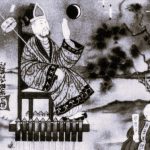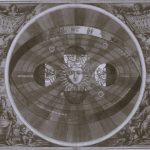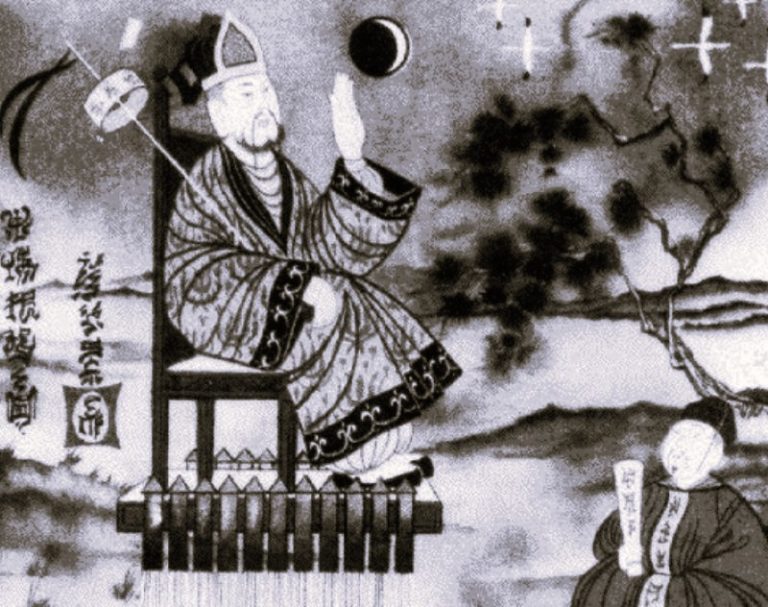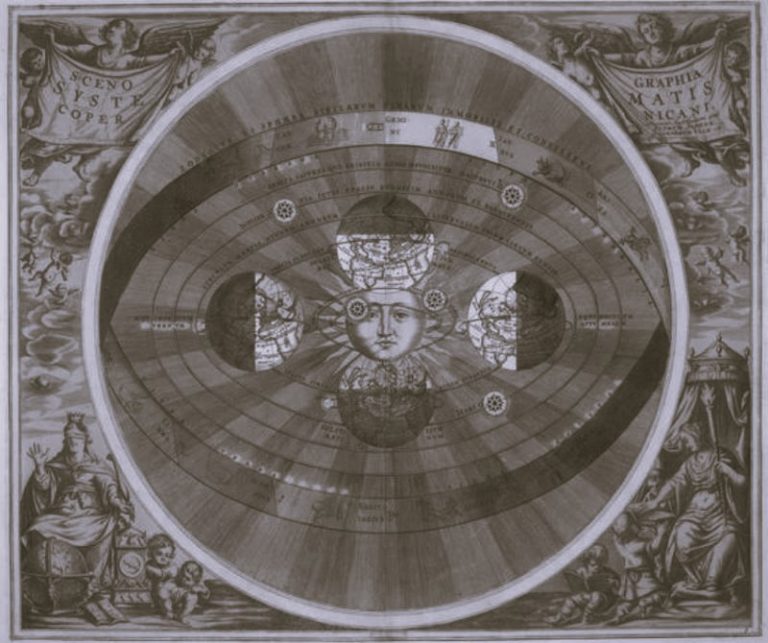

Introduction
The Church was the center of life in medieval western Europe. Almost every community had a church building. Larger towns and cities had a cathedral. Church bells rang out the hours, called people to worship, and warned of danger.
The church building was the center of community activity. Religious services were held several times a day. Town meetings, plays, and concerts were also held in churches. Merchants had shops around the square in front of the church. Farmers sold their produce in the square, and markets, festivals, and fairs were held there, as well.
During the Middle Ages, the Church provided education for some and it helped the poor and sick. It was a daily presence from birth to death. In fact, religion was so much a part of daily life that people even said a certain number of prayers to decide how long to cook an egg!
Christian belief was so widespread during this time that historians sometimes call the Middle Ages the “Age of Faith.” People looked to the Church to explain world events. Storms, disease, and famine were thought to be punishments sent by God. People hoped prayer and religious devotion would keep away such disasters. They were even more concerned about the fate of their souls after death. The Church taught that salvation, or the saving of a one’s soul, would come to those who followed the Church’s teachings.
Art and Architecture

During the Middle Ages, most art was made for a religious purpose. Paintings and sculptures of Jesus and Christian saints were placed in churches to help people worship. Since most people did not know how to read, art helped tell the story of Jesus’s life in a way that everyone could understand.
Medieval art and architecture found their most glorious expression in cathedrals, the large churches headed by bishops. (The word cathedral comes from the Latin word cathedra, meaning “the throne upon which a bishop sits”.) Cathedrals were built to inspire awe. For centuries, they were the tallest buildings in any community. Often they were taller than a 30-story building of today. Most were built in the shape of a cross, with a long central section called the nave and shorter side sections called transepts.
The cathedrals built between 1150 and 1400 were designed in the Gothic style. Gothic cathedrals were designed to look like they are rising to heaven. On the outside are stone arches called flying buttresses. The arches spread the massive weight of the soaring roof and walls more evenly. This building technique allowed for taller, thinner walls and more windows.
Gargoyles are a unique feature of Gothic cathedrals. Gargoyles are decorative stone sculptures projecting from the rain gutters or edges of a cathedral roof. They were usually carved in the form of mythical beasts. In medieval times, some people thought gargoyles were there to remind them that devils and evil spirits would catch them if they did not obey the teachings of the Church.
The immense space inside a Gothic cathedral was lined with pillars and decorated with religious images. Beautiful stained-glass windows let in colorful light. Stained-glass windows are made from pieces of colored glass arranged in a design. The pictures on medieval stained-glass windows often taught people stories from the Bible.
Cathedrals were visible expressions of Christian devotion. They were mostly constructed by hand by hundreds of workers and craftsmen over many years. On average, it took from 50 to 100 years to complete a cathedral. In some cases, the work took more than 200 years.
Education

During the Middle Ages, most schooling took place in monasteries, convents, and cathedrals. This pattern was established under Charlemagne, who encouraged the Church to teach people to read and write. During his reign, scholars developed a new form of writing that helped make reading easier. Instead of writing in all capital letters, as the Romans did, scholars began to use lowercase letters, too. We still use this system today.
In medieval times, the clergy were the people most likely to be educated. Most of the students in Church schools were sons of nobles who were studying for careers in the clergy. They spent much of their time memorizing prayers and passages from the Bible in Latin.
Starting in the 1200s, cathedral schools gave rise to universities. Students in universities studied Latin grammar and rhetoric, logic, geometry, arithmetic, astronomy, and music. Books at that time were hand copied and very rare, so teachers often read to students.
Ancient texts were greatly respected in the universities, but the Church was sometimes uneasy about them. The Church taught people to be guided by faith. Ancient writers like the Greek philosopher Aristotle taught that reason, or logical thinking, was the path to knowledge. Church leaders feared that studying such writers might lead people to question its teachings.
Thomas Aquinas (uh-KWINE-iss), an Italian scholar of philosophy and theology, tried to bridge the gap between reason and faith. Aquinas greatly admired Aristotle. He saw no conflict between faith and reason, because he believed that both were gifts from God. Reason, he believed, helped people discover important truths about God’s creation. Faith, meanwhile, revealed its own truths about God.
Aquinas wrote logical arguments in support of his faith to show how reason and religious belief worked together. For example, his concept of natural law stated that there was an order built into nature that could guide people’s thinking about right and wrong. Natural law, he said, could be discovered through reason alone. Since God had created nature, natural law agreed with the moral teachings of the Bible.
Aquinas’s teachings unified ancient philosophy and Christian theology. His teachings were later accepted and promoted by the Church.
Holidays
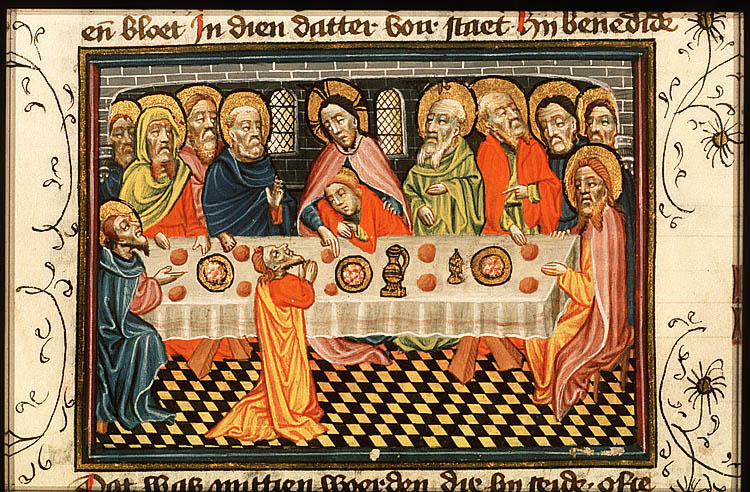
Medieval Europeans enjoyed many festivals and fairs that marked important days of the year. Most of these celebrations were connected in some way to the Church. Almost every day of the year was dedicated to a Christian saint, an event in the life of Jesus, or an important religious idea. In fact, our word holiday comes from “holy day.”
Two of the main medieval holidays were Christmas and Easter. Christmas is the day when Christians celebrate the birth of Jesus. During the Middle Ages, Christmas celebrations lasted for 12 days. On Christmas day, Christians attended church. Then they enjoyed a great feast, which was often held for everyone on the manor by its lord.
Easter is the day when Christians celebrate the Resurrection. In Christian belief, the Resurrection is Christ’s rising from the dead. For medieval Christians, Easter was a day of church services, feasting, and games. Often the games involved eggs, a symbol of new life.
Music, dancing, and food were all part of medieval holidays and festivals. People sang folk songs and danced. They drank their favorite beverages and they ate baked and fried foods.
Other favorite holiday entertainments included bonfires, acrobats and jugglers, and dancing bears. Plays were also popular. During religious services on special days, priests sometimes acted out Bible stories. By the 13th century, plays were often held outdoors in front of the church so more people could watch. In some English villages, mummers (traveling groups of actors) performed with masks, drums and bells, dances, and make-believe sword fights.
Monks, Nuns, and Friars
Religion was important to all Christians in the Middle Ages. Some men and women, however, solemnly promised to devote their lives to God and the Church.
The Monastic Way of Life

Monks were men who joined monasteries, communities devoted to prayer and service to fellow Christians. This way of life is called monasticism.
Men became monks for many reasons. Some were seeking refuge from war, sickness, or sinfulness. Some came to study. Some were attracted by a quiet life of prayer and service.
The man who developed the monastic way of life in western Europe was Saint Benedict. In the 6th century, he founded a monastery in Italy. His followers became known as the Benedictines. They followed Benedict’s “Rule,” or instructions. Benedictines made three solemn vows, or promises: poverty (to own no property), chastity (never to marry), and obedience (to obey their leaders).
Monks spent their lives in prayer, study, and work. They attended eight church services every day. Other duties included caring for the poor and sick, teaching, and copying religious texts. Since most monasteries were self-sufficient, monks spent much of their time working. They farmed their land, tended their gardens, raised livestock, and sewed clothing.
Most monasteries were laid out around a cloister, a covered walkway surrounding an open square. On the north side was the church. On the south side were the kitchen and dining hall. On the third side was the dormitory, or sleeping quarters. Monks slept in small cells, often on beds of wood.
The library writing room, called the scriptorium, was on the fourth side of the cloister. Here the monks copied books by hand and created beautiful illuminated manuscripts. By copying rare documents, monks kept knowledge of the past alive. Much of what we know today, about both the Middle Ages and ancient times, comes from their important work.
Both monks and nuns joined religious orders. Each order had its own distinctive rules and forms of service. The Benedictines were only one such group.
Monastic life was one of the few opportunities open to medieval women who did not wish to marry. Women who became nuns lived in convents. These communities were run in the same way as monasteries. Nuns did most of the same types of work that monks performed.
Many nuns became important reformers and thinkers. For example, in Germany, Hildegard of Bingen founded a convent and was an adviser to popes and other Church officials. She also wrote books in which she criticized some of the practices of the Church.
Friars

Some people wanted to live a religious life without the seclusion of the monastery. A famous example is Saint Francis of Assisi. Francis was born to a wealthy Italian family, but he gave up his money to serve the poor. He founded the Franciscans, an order that is also called the Little Brothers of the Poor.
Instead of living in monasteries, Franciscan friars traveled among ordinary people to preach and to care for the poor and sick. They lived in complete poverty and had to work or beg for food for themselves and the poor. For this reason, they were also called mendicants, a word that means “beggars.” With his friend Clare, Francis founded a similar order for women called the Poor Clares.
Francis, who loved nature, believed that all living things should be respected. He is often pictured with animals. To many, his example of faith, charity, and love of God represents an ideal of Christian living.
Pilgrimages and Crusades

During the Middle Ages, religious faith led many people to perform extraordinary acts of devotion. For example, most Christians hoped to go on a pilgrimage at some point in their lives. Pilgrims traveled long distances to visit holy sites, such as Jerusalem (where Jesus was killed) and Rome. They also visited churches that housed relics, the body parts or belongings of saints. Canterbury Cathedral in England was a major destination for pilgrims.
Pilgrims went on these journeys to show their devotion to God, as an act of penance for their sins, or in hopes of being cured of an illness. A pilgrimage required true dedication, because travel was difficult and often dangerous. Most pilgrims traveled on foot. Because robbers were a constant threat, pilgrims often banded together for safety. Sometimes they even hired an armed escort. Along the routes of popular pilgrimages, local rulers built special roads and bridges. Monks and nuns set up hostels, or special guest houses, spaced a day’s journey apart.
Geoffrey Chaucer wrote a popular narrative poem about pilgrims called the Canterbury Tales. Chaucer lived in England from about 1342 to 1400. His amusing “tales” are stories that a group of pilgrims tells to entertain each other as they travel to the shrine of Saint Thomas Becket at Canterbury. Among Chaucer’s pilgrims are a knight, a miller, a cook, and a prioress (the head of a convent, or community of nuns).
A second type of extraordinary service involved fighting in the Crusades. The Crusades were a series of military expeditions to the land where Jesus had lived, which Christians called the Holy Land. During the 7th century, this part of the Middle East had come under the control of Muslims. Jerusalem, which was a holy city to Jews, Christians, and Muslims alike, became a Muslim city. Between 1095 and 1270, Christians in western Europe organized several Crusades to recover Jerusalem and other sites of pilgrimage in that region.
Some people went on Crusade to seek wealth, and some to seek adventure. Others went in the belief that doing so would guarantee their salvation. Many Crusaders acted from deep religious belief.
Sacraments and Salvation

Most people in medieval Europe believed in God and an afterlife, in which the soul lives on after the body’s death. The Church taught that people gained salvation, or entry into heaven and eternal life, by following the Church’s teachings and living a moral life. Failing to do so condemned the soul to eternal suffering in hell.
To believers, hell was a real and terrifying place. Its torments, such as fire and demons, were pictured in vivid detail in many paintings.
The Church taught its members that receiving the sacraments was an essential part of gaining salvation. Sacraments were sacred rites that Christians believed brought them grace, or a special blessing from God. The sacraments marked the most important occasions in a person’s life.
The Christian Church Takes Shape
Overview
The Christian religion is one of the most important legacies of ancient Rome. Christians are followers of Jesus, who, according to Christian scripture, was put to death on a Roman cross in the 1st century C.E. Christians believe that Jesus was the son of God, that God sent him to Earth to save people from their sins, and that he rose from the dead after his death by crucifixion.
Initially, the Romans persecuted Christians for their beliefs. Yet the new religion continued to spread. In 313 C.E., the Roman emperor Constantine issued a decree allowing Christians to practice their religion freely. In 395 C.E., Christianity became the official religion of the Roman Empire.
At the start of the Middle Ages, all Christians in western Europe belonged to a single church, which became known as the Roman Catholic Church. After the collapse of Rome, the Church played a vital role in society. In part, it was one of the few ties that people had to a more stable time. The Church provided leadership and, at times, even organized the distribution of food. Monasteries, or communities of monks, provided hospitality to refugees and travelers. Monks also copied and preserved old texts, and in this way helped keep both new and ancient learning alive. The spread of monasteries and the preaching of missionaries helped bring new converts to the Christian faith.
The Organization of the Roman Catholic Church

Over time, Church leaders developed an organization that was modeled on the structure of the old Roman government. By the High Middle Ages, they had created a system in which all clergy members had a rank. The pope, who was the bishop of Rome, was the supreme head of the Roman Catholic Church. He was assisted and counseled by high-ranking clergymen called cardinals. Cardinals were appointed by the pope and ranked just below him in the Church hierarchy.
Archbishops came next. They oversaw large or important areas called archdioceses. Below them were bishops, who governed areas called dioceses from great cathedrals. Within each diocese, priests served local communities, called parishes. Each parish had its own church building.
The Increasing Power of the Church
During the Middle Ages, the Church acquired great economic power. By the year 1050, it was the largest landholder in Europe. Some land came in the form of gifts from monarchs and wealthy lords. Some land was taken by force. The medieval Church added to its wealth by collecting a tithe, or tax. Each person was expected to give one-tenth of his money, produce, or labor to help support the Church.
The Church also came to wield great political power. Latin, the language of the Church, was the only common language in Europe. Church officials were often the only people who could read. As a result, they kept records for monarchs and became trusted scribes and advisers.
At times, the Church’s power brought it into conflict with European monarchs. One key struggle involved Pope Gregory VII and Henry IV, the Holy Roman emperor.
Gregory was elected pope in 1073. An ambitious leader, he undertook several reforms, such as forbidding priests to marry and outlawing the selling of Church offices (official positions). He also banned the practice whereby kings could appoint priests, bishops, and the heads of monasteries. Only the pope, said Gregory, had this right.
Gregory’s ruling angered Henry IV. Like rulers before him, Henry considered it his duty (and privilege) to appoint Church officials. He called a council of bishops and declared that Gregory was no longer pope. Gregory responded by excommunicating Henry. This meant Henry was thrown out of the Church and, therefore, could not gain salvation. Gregory also said that Henry’s subjects were no longer obliged to obey him.
The pope’s influence was so great that Henry begged forgiveness and was readmitted to the Church. For the moment, his action amounted to recognizing the pope’s authority even over an emperor. But future rulers and popes would resume the fight over the rights of the Church versus those of the state.
Originally published by Flores World History, free and open access, republished for educational, non-commercial purposes.
